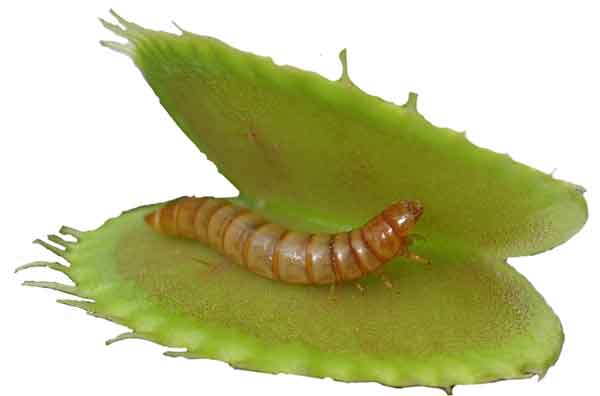 The battle for survival has evolved plants far beyond their conventional boundaries. Plants which are mostly thought of as static objects have put themselves in the race of predators. When the food becomes scarce, plants don’t just rely on photosynthesis. But many species of plants also eat meat as their food source. These plants are called carnivorous (meat-eating) plants that rely on smaller animals such as insects and frogs as their food source.
The battle for survival has evolved plants far beyond their conventional boundaries. Plants which are mostly thought of as static objects have put themselves in the race of predators. When the food becomes scarce, plants don’t just rely on photosynthesis. But many species of plants also eat meat as their food source. These plants are called carnivorous (meat-eating) plants that rely on smaller animals such as insects and frogs as their food source.
Why Do Plants Eat Meat?
Carnivorous plants are mostly found in places where the soil is poor in minerals. These plants can’t get necessary nutrients from the soil with the help of their roots. So, they have developed specialized adaptations and mechanisms to catch prey to meet their nutrient needs. But it should not be confused with how animals consume and process the food. Carnivorous plants use different methods for absorbing nutrients from smaller prey. Carnivorous plants mostly consume insects and smaller animals, such as bees, flies, and smaller frogs.
How Carnivorous Plants Catch Prey
There are about 630 known species of carnivorous plants on the Earth. These species have evolved 5 different types of trapping mechanisms to catch their prey. Most of the carnivorous plants use only one type of trapping mechanism. These trapping mechanisms are:
- Pitfall (Pitcher) trap
- Flypaper trap
- Snap trap
- Bladder trap
- Lobsters-pot trap
Pitfall (Pitcher) Trap

Carnivorous Plants that use this trap have funnel-shaped slippery leaves. When bugs land on their leaves, they just slide to the bottom of the leaf and fall into their digestive enzyme pool where they are digested. These plants attract bugs by their sweet-smelling nectar and attractive appearance. Heliamphora chimantensis is the species of plants that use this trapping mechanism.
Flypaper Trap

In this trap, plants use special glue on their leaves that is secreted by their glands. When bugs sit on their leaves, they are stuck on it and can’t fly away. The captured insects are stuck in such a way that their struggle makes them more entangled. After that, digestive enzymes are secreted on the prey for digestion and absorption. Drosera capensis plant uses this trapping mechanism.
Snap Trap

In this trap, plants catch their prey with their mouth-shaped leaves whose outer edge is covered with spiky hairs. When a bug lands on its leaf, the plant senses its movement with the help of its sensitive trigger hairs. After the movement sensation, the mouth-shaped leaves (lobes) are shut closed instantly to capture the prey tightly. Then, digestive enzymes are secreted on the prey to break down its body for absorption of nutrients. Venus Flytrap uses this kind of trap to catch bugs.
Bladder Trap

Carnivorous Plants that use this type of trap dwell in water bodies. These plants have a special structure called a bladder along with a door that acts like a valve. The door of the bladder is normally closed to create a vacuum inside. When the sensitive hairs of the plant are triggered, the door opens rapidly and water rushes inside the bladder along with the prey. Then, the door gets closed and digestion of the prey starts. Utricularia vulgaris plant uses this kind of trap.
Lobsters-pot Trap

These carnivorous plants have modified chamber-like leaves which makes it easy for the bugs to enter, but very difficult to go outside. Also, it has inward-pointing spines which makes the outside route very difficult. These plants attract prey by secreting a substance that looks similar to food particles. After a successful catch, these plants also secrete digestive enzymes on the prey for digestion. Genlisea violacea plant uses this kind of trap.
Size of Carnivorous Plants
Carnivorous plants mostly grow up to 12 inches (1 foot) long, so they are unlikely to trap people and bigger animals. However, some species can grow to a length 3 three feet. The size of carnivorous plants also depends on environmental conditions, such as the availability of sunlight, soil composition, and water quality.
Fun Facts
- Venus flytraps are very famous carnivorous plants due to their jaw-shaped leaves that catch bugs.
- The United States grows more carnivorous plants than any other country.
- Curious people around the World also grow carnivorous plants in their gardens. Under controlled conditions, carnivorous plants can grow larger than their normal size.





